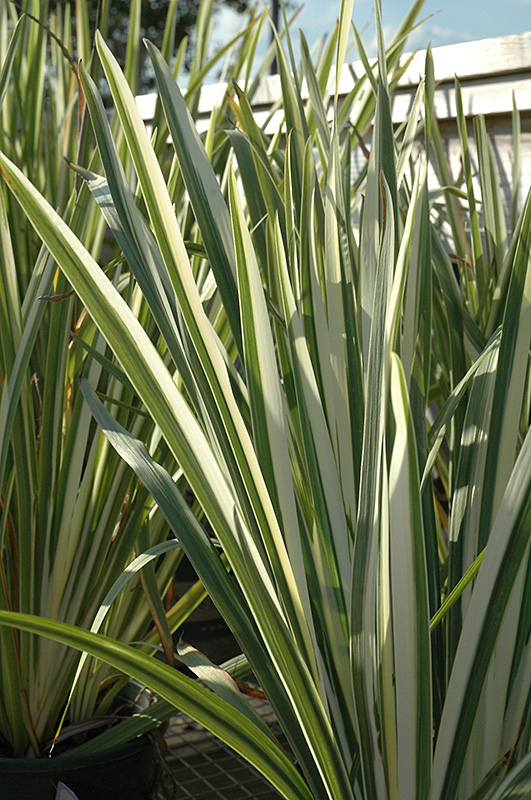Variegated Japanese Flag Iris
Iris ensata 'Variegata'
Plant Height: 24 inches
Flower Height: 3 feet
Spacing: 18 inches
Sunlight:
![]()
![]()
Hardiness Zone: 4
Other Names: Japanese Water Iris, Russian Iris, Japanese Flag
Description:
Attractive variegated foliage and violet flowers; good for bogs or ponds as it requires consistent moisture; blooms emerge from lush, sword-like foliage; hardy and easy to grow; cut back in the fall to reduce pests
Ornamental Features
Variegated Japanese Flag Iris features showy violet flag-like flowers with yellow centers at the ends of the stems in mid summer. The flowers are excellent for cutting. Its attractive sword-like leaves remain green in colour with showy white variegation throughout the season.
Landscape Attributes
Variegated Japanese Flag Iris is an herbaceous perennial with tall flower stalks held atop a low mound of foliage. Its medium texture blends into the garden, but can always be balanced by a couple of finer or coarser plants for an effective composition.
This plant will require occasional maintenance and upkeep, and should be cut back in late fall in preparation for winter. Deer don't particularly care for this plant and will usually leave it alone in favor of tastier treats. Gardeners should be aware of the following characteristic(s) that may warrant special consideration;
- Insects
Variegated Japanese Flag Iris is recommended for the following landscape applications;
- Mass Planting
- General Garden Use
- Bog Gardens
Planting & Growing
Variegated Japanese Flag Iris will grow to be about 24 inches tall at maturity extending to 3 feet tall with the flowers, with a spread of 24 inches. When grown in masses or used as a bedding plant, individual plants should be spaced approximately 18 inches apart. The flower stalks can be weak and so it may require staking in exposed sites or excessively rich soils. It grows at a medium rate, and under ideal conditions can be expected to live for approximately 10 years. As an herbaceous perennial, this plant will usually die back to the crown each winter, and will regrow from the base each spring. Be careful not to disturb the crown in late winter when it may not be readily seen!
This plant does best in full sun to partial shade. It prefers to grow in moist to wet soil, and will even tolerate some standing water. It is not particular as to soil type or pH. It is somewhat tolerant of urban pollution. This is a selected variety of a species not originally from North America. It can be propagated by division; however, as a cultivated variety, be aware that it may be subject to certain restrictions or prohibitions on propagation.


